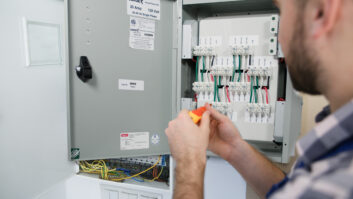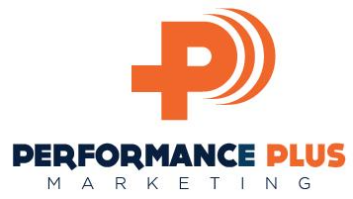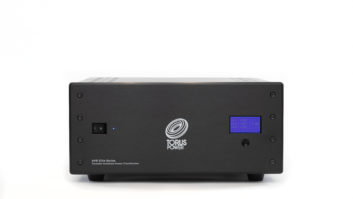“Have you tried turning it off and on again?” is the standard telephone greeting of Roy Trenneman, the perpetually annoyed information technology worker and protagonist of the silly British sitcom, The IT Crowd. It’s the simplest of fixes for the majority of glitches our equipment might experience: a quick, easy hard reboot. But how much of your time have you wasted over the years trying to talk clients through the process, or rolling a truck to do it yourself?
While the value of a dependable power management product to safeguard the priceless arrays of technology installed in homes from events like catastrophic surges should be all but obvious by now, this product category has been quietly evolving over recent years to do far more than just regulate against current spikes. Like the high-end network routers that have become a near-necessity to ensure all of a home’s devices receive the optimal connectivity they thrive, the need for quality power management devices is becoming just as critical to keep things operating with clean, even power. Plus, they can make the hard-reboot service call completely a thing of the past.
Among the chief players in the category is Core Brands’ Panamax and Furman sister brands of power conditioning equipment, which feature the company’s BlueBOLT IP control and remote management technology. “At the end of the day, the goal of a power management device is to ensure system reliability and eliminate service calls,” said John Benz, director of product management at Core Brands. “Remote management accomplishes these results in a very tangible fashion by enabling the integrator to reboot problem components in real-time without rolling a truck.”

Panamax’s VT4315-PRO vertical rack power conditioner with BlueBOLT technology has been popular due to its versatile functionality and its vertical mounted, 0-RU form factor.
In addition to the standard functionality of surge protection, line noise filtering, and battery backup, Blue- BOLT adds the ability to monitor a client’s system status, schedule automatic power cycling, and yes, reboot the system remotely without rolling a truck. According to Benz, products like the Panamax VT4315-PRO vertical rack power conditioner have been very popular because of its versatile functionality and its vertical mounted, 0-RU form factor that doesn’t take up valuable rack space.
Speaking of racks, Middle Atlantic Products has invested significant energy into making the equipment in a rack as reliable as possible. “With the industry moving toward smaller component footprints, more devices are going inside the rack–most of which are externally DC powered,” said Scott Lowder, senior product manager of power at Middle Atlantic. “However, additional power strips and adapters introduce more points of failure.”
To protect a rack’s contents against disturbances of almost all kinds, the company has released solutions like RackLink, which works with most control systems with features such as remote event logging, monitoring, and control of individual outlets, eliminating the need to manage power separately. With RackLink’s IP-controlled power distribution, integrators can remotely cycle power and monitor the thermal and network needs of a system, as well. And, according to Lowder, the company is on the verge of revealing a new product at InfoComm 2016: “a reliable, flexible, and centralized DC power supply that addresses [voltage] risks, eliminates clutter, improves airflow, and provides overall organization within the rack.”

RackLink from Middle Atlantic works with most control systems, with features such as remote event logging, monitoring, and control of individual outlets, eliminating the need to manage power separately.
Like Core Brands and Middle Atlantic, Torus Power also builds IP control into its power management products, with special attention paid to the devices that need rebooting the most: network equipment. The company’s AVR-2 series of products was designed with individual outlet control, including a special reboot outlet dedicated for routers, modems, and other similar equipment. The AVR series is also compatible with Ihiji cloud-based monitoring, furthering its remote functionality.
Torus Power looks at power management as a foundational part of the system, and every product its builds uses a massive, oversized isolation transformer at its foundation, said Kevin Main, the company’s president and COO. “An isolation transformer disconnects the audio, video, and control system from the electrical grid, giving the system the ultimate platform for performance, protection, and reliability,” he stated. According to Main, Torus’ products not only protect against ever-dangerous under-voltage problems, but its isolation transformers enable added dynamic capability, which can be used to run even the most power-hungry amplifiers.

Torus Power’s AVR-2 series of products was designed with individual outlet control, with a special reboot outlet dedicated for routers, modems, and other similar equipment that frequently needs rebooting.
AMETEK Electronic Systems Protection has dedicated its efforts to addressing the frequently disastrous effects event of power surges. While most power management devices are designed to mitigate these events, AMETEK’s SurgeX brand goes beyond this, with the aim of completely eliminating surges. “Currently, [the SurgeX] Advanced Series Mode technology is the only technology capable of eliminating surge energy up to 6,000 volts and providing clean power to connected devices without exposing equipment to damaging in-rush current, ‘let-through’ energy, or diverting surge energy to the ground,” said Dave Perrotta, director, business manager for AMETEK, which is also the parent company of SurgeX’s sister brand, ESP.

SurgeX SA-1810 from AMETEK Electronic Systems Protection features Advanced Series Mode technology, which is capable of eliminating surge energy up to 6,000 volts and providing clean power to connected devices.
According to Perrotta, protecting against smaller, non-catastrophic surges is also very important, as these minor fluctuations are quite frequent and over time, not only cause frustrating malfunctions and downtime, but also can contribute to “electronic rust,” which slowly degrades the equipment. “It’s estimated that businesses experience 50 to 60 power anomalies per month, and while many of these are low scale, nearly all go undetected,” he said. “Having a system in place that proactively protects connected equipment from these events can go a long way in not only safeguarding devices but can also prolong equipment lifespan and improve performance.”
For the most serious electrical needs, or for those looking to combine renewable energy sources with grid-supplied electricity for power that never fails, there’s Rosewater Energy Group. The company’s CEO and managing director, Joe Piccirilli, offered his insight into the direction of the smart home: “As we move toward the ‘internet of everything,’ the need for uninterrupted, high-quality power at the residential level will become increasingly more important. Since it is so difficult to build more power plants, power quality and quantity will be more strained and unrealizable.”

Rosewater Energy Group’s Residential Energy Management Hub works almost like a micro-grid for a home, combining renewable, grid-produced, and stored energy to provide a residence with clean, uninterrupted power to run all of its devices.
The company’s Residential Energy Management Hub works almost like a micro-grid for a home, combining renewable, grid-produced, and stored energy to provide a residence with clean, uninterrupted power to run all of its devices. Featuring 10 and 20kW models with either nano-carbon or lithium-ion batteries, the Hub not only protects all of a home’s equipment with conditioned electricity, its robust backup capabilities all but render power outages a thing of the past. And due to their ease of integrating renewable energy, like solar power, Piccirilli sees this category of products becoming increasingly prevalent in the future–with the help of integrators. “Because system integrators are at the forefront of new technologies and are the trusted providers to the innovator and early adopters, they will be critical to the success of these products,” he said.
So while someday all of your clients might be running their equipment from hubs like those from Rosewater, there’s absolutely no excuse for not implementing some form of intelligent power management device into their systems today.
John Benz of Core Brands summed up the importance of the power conditioning product category well: “To the end user, the benefits of a great power management device are often transparent. But when a lightning strike hits and their system rack is the only thing that powers up in the home, or when an integrator is able to service their system immediately without sending a technician, the previously quiet and unassuming power device becomes the most critical component in an entire system–and the integrator is a hero for having the foresight to specify it.”
Matt Pruznick is associate editor of Residential Systems and Systems Contractor News. Follow him on Twitter @Pruznick.







